Laksa is a noodle dish commonly found in Singapore, Malaysia and Indonesia. While the precise origin of the dish is unknown, what is certain is laksa is a signature dish of the Peranakan cuisine. The Peranakans are descendants of Chinese migrants (possibly sailors) who settled in the region since the fourteenth century. Peranakan cuisine combines the ingenious use of Southeast Asian spices in Malay cuisine, with Chinese ingredients like noodles and Chinese food forms like soups.
How Many Types of Laksas are there?
From southern Thailand to southern Sumatra, there are as many types of laksas as there are cities.
But one can generally divide them into 2 broad categories: curry laksa and asam laksa.
- Curry laksa features a heavily spiced soup thickened with coconut milk. Examples of curry laksa are Singapore Katong Laksa, Johor Laksa, Sarawak Laksa and Palembang Laksa.
- Asam laksa features a lighter but sour broth made with fish sans coconut milk. Asam refers to tamarind, and sometimes, sour pineapple is added as a topping to increase the sourness. Examples of this laksa are Penang laksa, Ipoh Laksa and Medan Laksa.
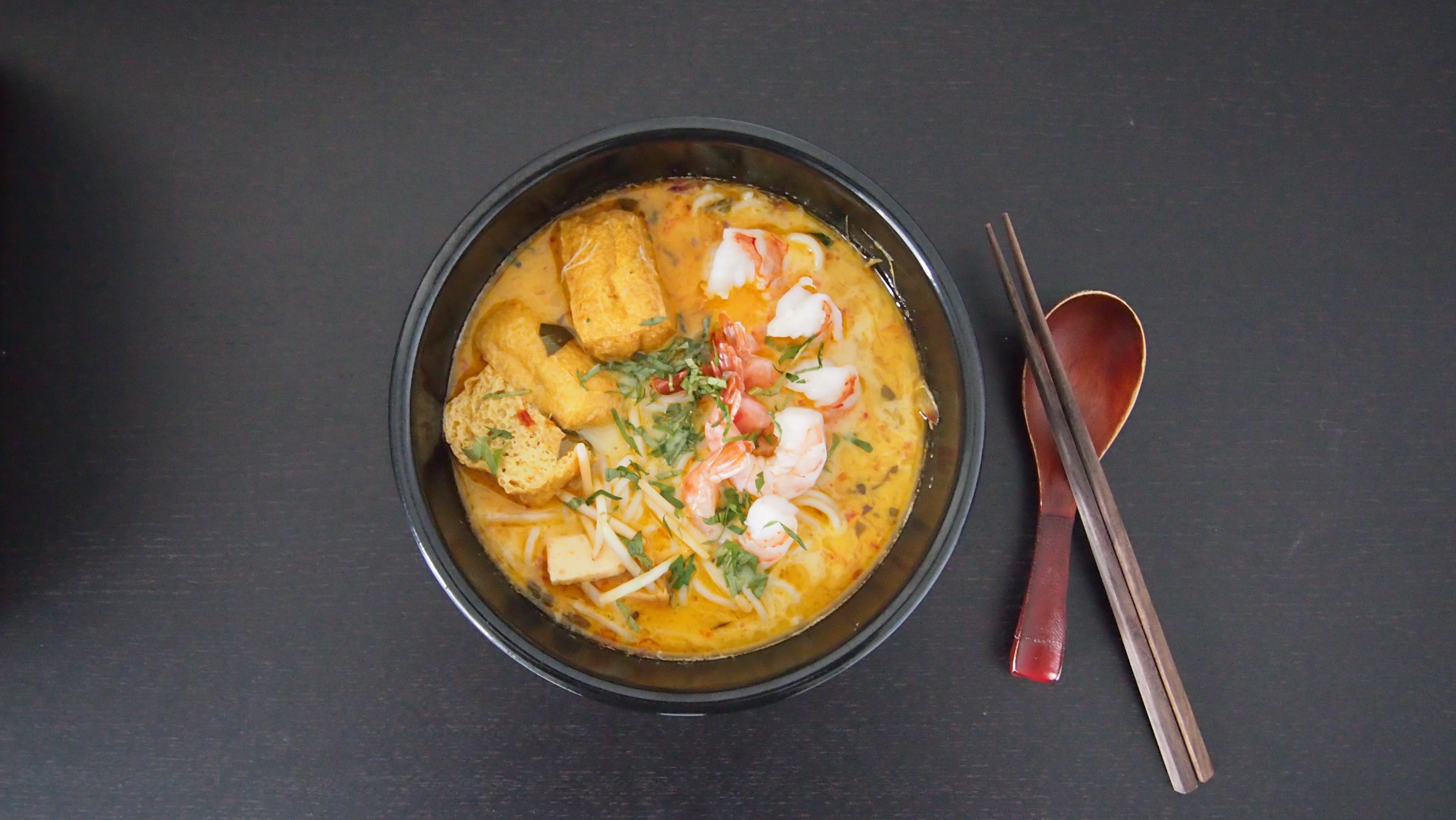
Singapore Katong Laksa
Since I’m Singaporean, I’m most familiar with this variety of laksa. Surprisingly, even in Singapore, there are different types of Singapore Laksa.
Nonya or Katong laksa
Nonya is a Peranakan woman while Baba is a Peranakan man. PeranakanS speak a form of Malay with some Hokkien and Cantonese words. The older generation often worship an ancient Chinese deity no longer found in China called ’Tua Pek Kong’ (大伯公). When Chinese sea explorer, Zheng He 郑和, arrived in Malaya in the early fifth century he was surprised to find Peranakans who could still speak some form of Chinese. Interestingly, traditional Peranakan families hold on to old Chinese patrilineal values from the Ming Dynasty especially regarding gender roles – in sharp contrast to local Malay matrilineal culture where the grandmother was the ruler of the family, until Islam arrived and destroyed that societal structure.
Nonyas had to stay at home, out of sight of any men apart from her immediate family. Throughout her childhood and youth, she was trained by her mother to perfect the art of cooking, serving and sewing. Traditional Peranakan dishes are often very labour-intensive and the presentation has to be immaculate, not unlike other Confucian societies such as Japan and Korea in modern times.
The reason why the name ’nonya laksa’ sounds like an oxymoron, is laksa being Peranakan has always been prepared by a nonya, much like saying ‘Italian spaghetti’. The reason is to make it distinct from the later variety – the Chinese laksa’ – that emerged.
’Nonya laksa’ was originally called Katong Laksa.
Katong is a district in the East Coast of Singapore, to close where I grew up. The area was originally populated by Singapore’s Peranakan community. There were two extremely popular laksa stalls there in the 1960s – Marine Parade Laksa and Roxy Laksa – such that people started calling the type of laksa there ’Katong Laksa’.
Singaporean food blogger ‘iEatiShootiPost’ posted a very good history of Katong Laksa.
The original version had blood cockles, but with the hepatitis scare in the 90s, all forms of laksa sold publicly have stopped adding those. Apart from blood cockles, prawns and fishcake are the only other toppings.
Chinese laksa
When the second wave of Chinese immigrants arrived after the British colonised Singapore, they fell in love with laksa. As time went by, they started selling their laksa which is more or less the same but with more ingredients like fishballs (bad idea), hard-boiled eggs (so-so idea), beansprouts (so-so idea) and fried tofu puffs known as ‘taupok’ (great idea).
Kampung laksa
Back in the ‘70s when there were still villages in Singapore, some Malay villagers also sold laksa. It was much creamier than the Katong version and had a curious sandy texture to the soup. Rumour has it that they added ground earthworms to the soup base (which in theory could greatly increase the umami-ness of the gravy!). I wish I had the chance to try this variant, which has unfortunately been extinct since urbanisation.
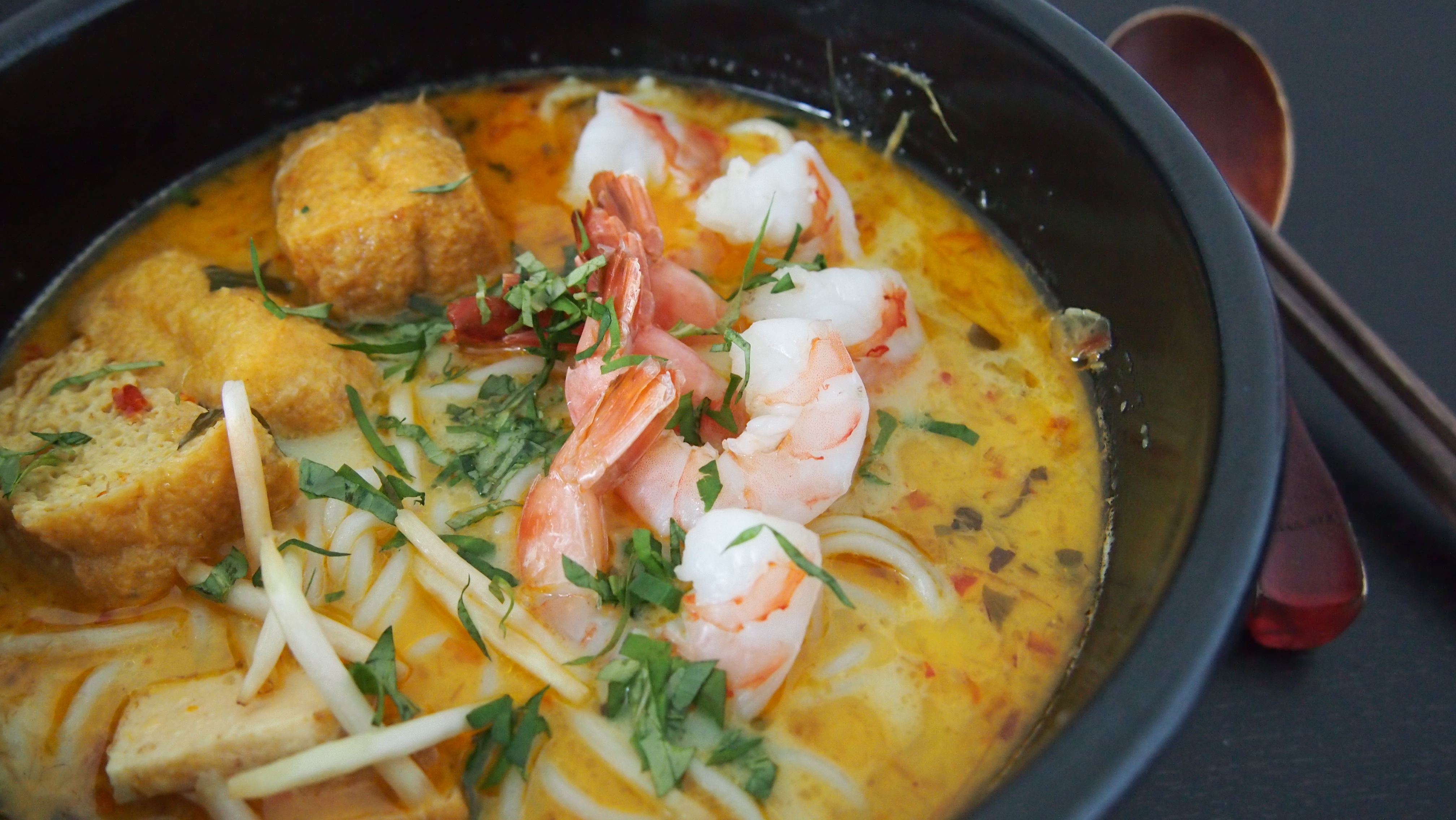
Notes about this recipe
This recipe originally comes from The Meatmen, which originally came from a Nonya woman (somehow the link was gone from the site). I have modified the recipe because my Le Creuset pot was not big enough plus I prefer to use fresh ingredients instead of powder. If you, like me like fresh spices, you had better make sure you have a powerful food processor. Otherwise, stick to spice powder, or your soup will be filled with hard and chewy spices.
Also, without laksa leaves, you cannot make Singapore Laksa.
Laksa leaves is known as daun kesom in Malay. I have written a blog post about daum kesom. Laksa leaves HAVE to be fresh. Drying or freezing it will make it lose the amazing aroma. If you cannot find this, forget about making this recipe. Try asking around in a Vietnamese or Malay grocery store. Strangely, Indonesians and Thais do not use it at all.
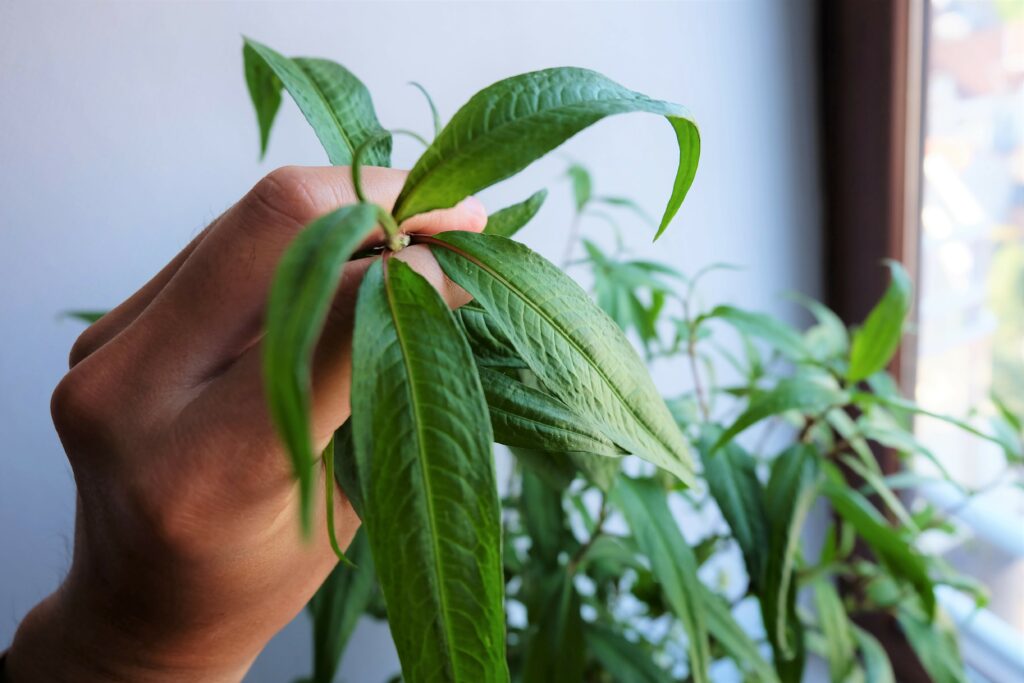
Lastly, if you cannot find fresh ’thick rice noodles’ (sometimes sold to non-Singaporeans as ‘rice spaghetti’) called ’tsor beehoon’ 粗米粉 , you can replace it with normal spaghetti. The look and size of the noodles are the same, but the taste, texture and slurpy index are definitely less satisfactory. The Singaporean brand ’Prima Taste’ sells the dried version, so you can very well find it online.
Ingredients:
Spice Paste
- 15 dried red chillies
- 75g dried shrimp
- 100g shallots (peeled)
- 5 fresh Thai red chillies
- 3 cloves garlic (peeled)
- 15g fresh turmeric (or 5tsp turmeric powder)
- 20g fresh galangal (or 10 tsp galangal powder)
- 20g fresh ginger (peeled)
- 3 stalks fresh lemongrass (white portion)
- 3 dried candlenuts
- 10g dried coriander seeds (or 1 tbsp coriander powder)
- 20g belachan (dried shrimp paste)
- 120ml peanut oil
Soup
- 1 litre chicken or prawn stock
- 200ml water from rehydrating dried shrimps and chillies
- 1 litre fresh (or canned) coconut milk
- 2 tbsp salt (adjust to taste)
- 2 tbsp sugar(adjust to taste)
- 5 stalks laksa leaves
- 10 taupok (fried tofu puff; quartered)
Toppings and garnishing
- 300g prawns (or 6-8 per person)
- 300g bean sprouts (ends removed; optional)
- 300g fresh thick beehoon (rice spaghetti)
- 200g fried fish cake (cut into strips) (optional)
- 20 thinly sliced laksa leaves
- 2 hard-boiled egg (peeled and halved; half an egg per person) (optional)
- 250g blood cockles (scalded with boiling water then removed fro shells) (optional)
Serving: 4 persons
Instructions
A. Prepare your stock
- Rehydrate the dried chillies and dried shrimps in a bowl with 200ml boiling water. Leave for about 20 minutes.
- Strain and collect the water: set the chillies and shrimps aside. Add the water to a pot together with your chicken or prawn stock.
- Bring to boil your stock.
- Peel the prawns for topping, add the shells to the stock.
- Using a netted ladle, poach your prawns in the boiling stock.
- Once cooked, set the prawns aside.
- Turn the heat down to very low to keep the stock lightly simmering.
B. Prepare the spice paste and the soup
- Add the following your your food processor: rehydrated red chillies and shrimps, shallots, garlic, turmeric, galangal, ginger, lemongrass, candlenuts, coriander seeds, 60ml peanut oil
- Blend into a paste, as fine as possible (very important!)
- Break and toast the belachan in a pot on medium heat. Make sure the pungent smell is released and the belachan is slightly burnt. (Beware: this stinks horribly!!)
- Add spice paste from the food processor.
- Add the remaining 60ml peanut oil.
- Stir-fry for 30 minutes (important! This will soften the spice paste and release the aroma, but take care not to burn it) until the spice paste starts to turn dark brown.
- Strain and add your stock to the spice paste. Bring to boil.
- From your 5 stalks of laksa leaves, remove and add the leaves to the boiling soup, discard the stalks.
- Let it simmer on low heat for 30 minutes.
- Add coconut milk.
- Add the sugar and salt (adjust to taste).
- Add the fried tofu puffs, bring to boil and let the puffs soak up the soap before turning the heat to low and let it simmer. Do not boil for too long otherwise the coconut milk will coagulate.
C. Serving it
- Blanche separately in boiling water your rice noodles, bean sprouts, fish cake strips.
- Divide the noodles in four serving bowls, topped with bean sprouts and fish cake strips.
- Add the piping hot laksa soup to each bowl with a few slices of fried tofu puffs (if you have used those).
- Add poached prawns, hard-boiled egg (half per bowl) and a big spoonful of blood cockles (if you use those).
- Garnish with freshly and thinly sliced laksa leaves. Serve immediately.
If you like this recipe, check out my other Singaporean recipes!
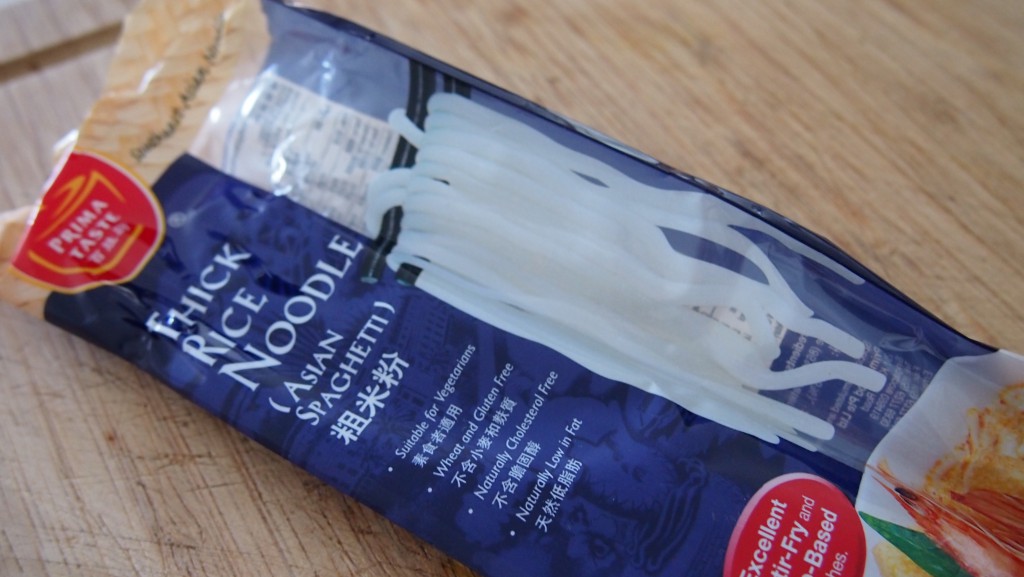
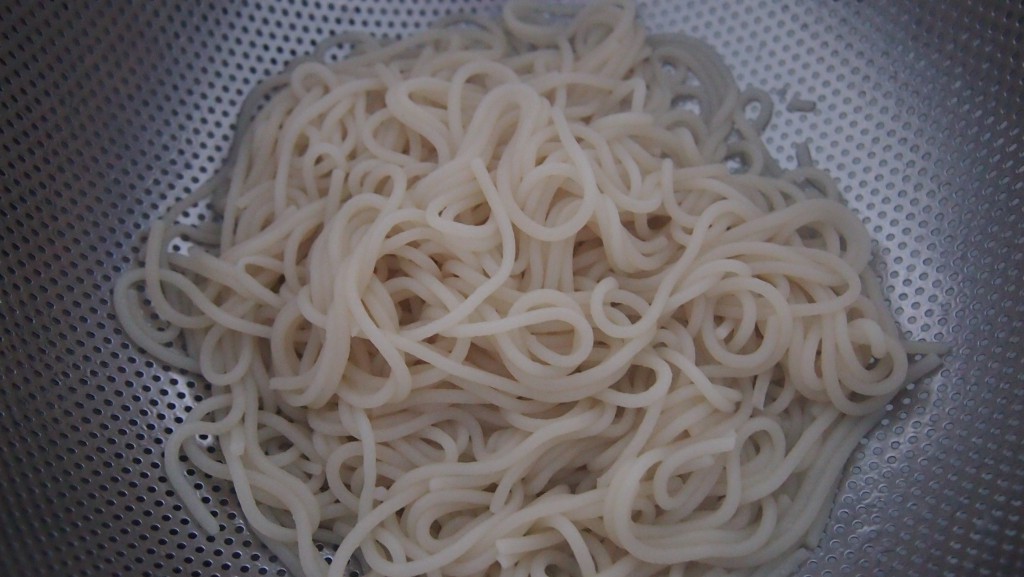
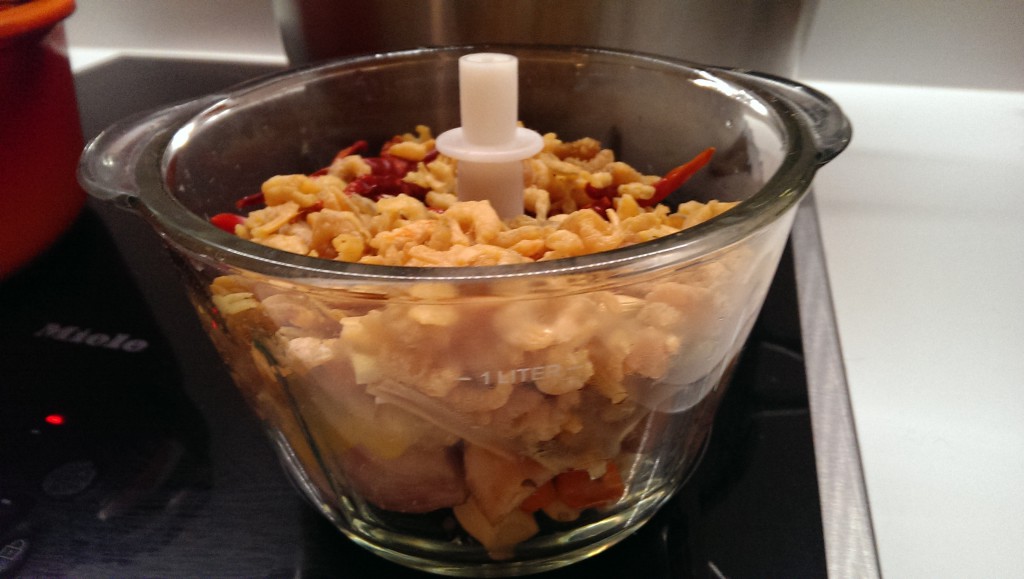
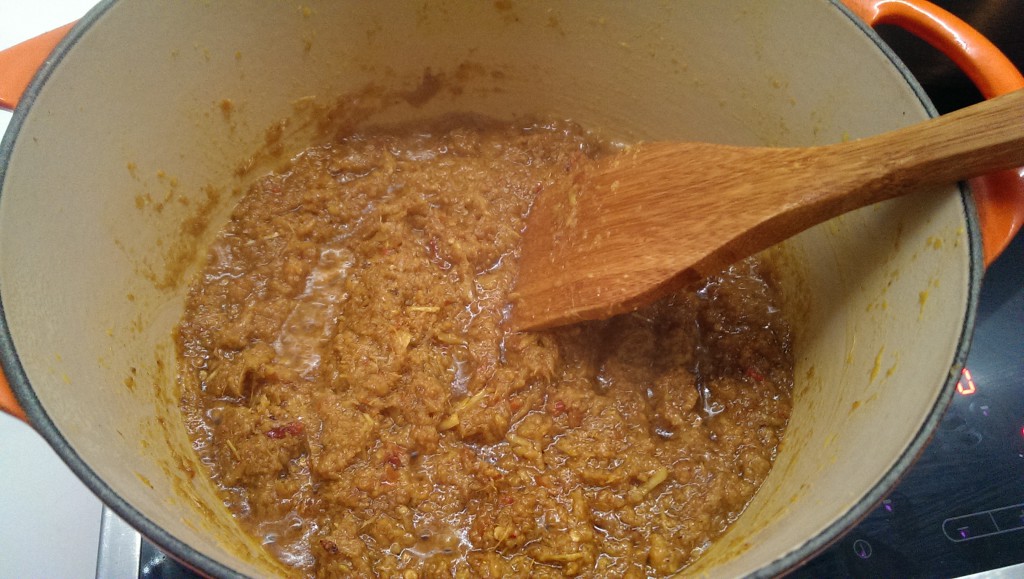
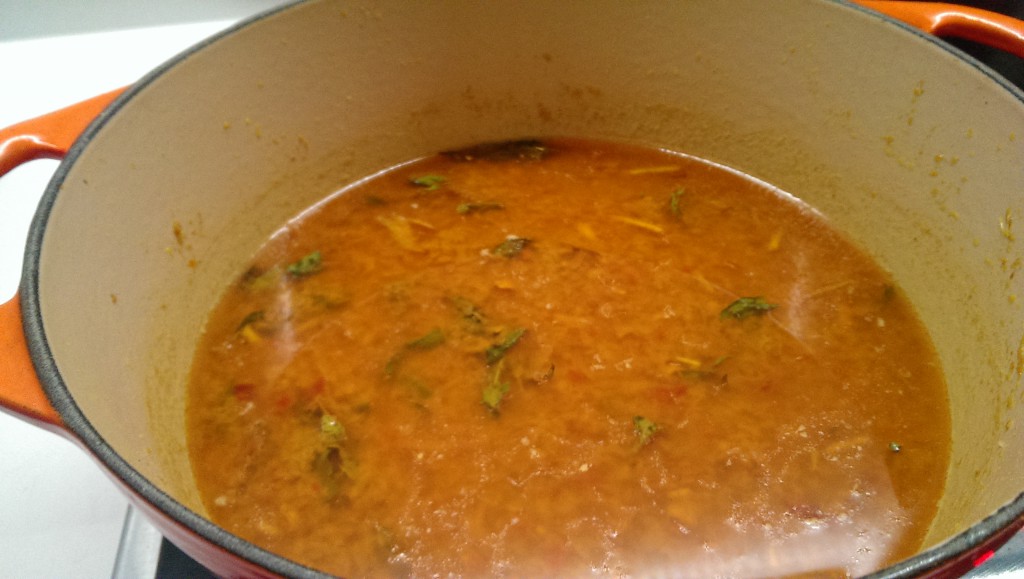
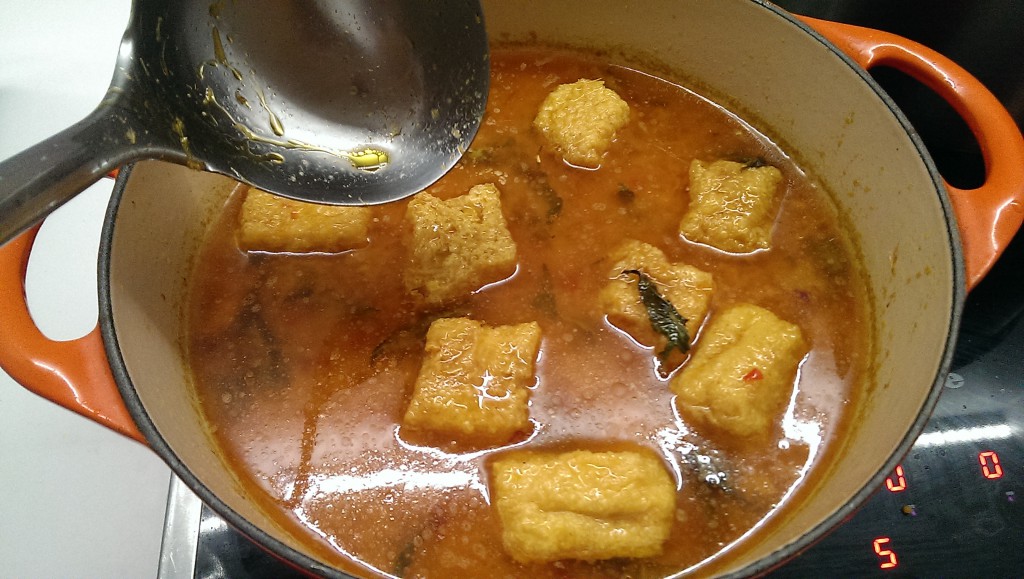
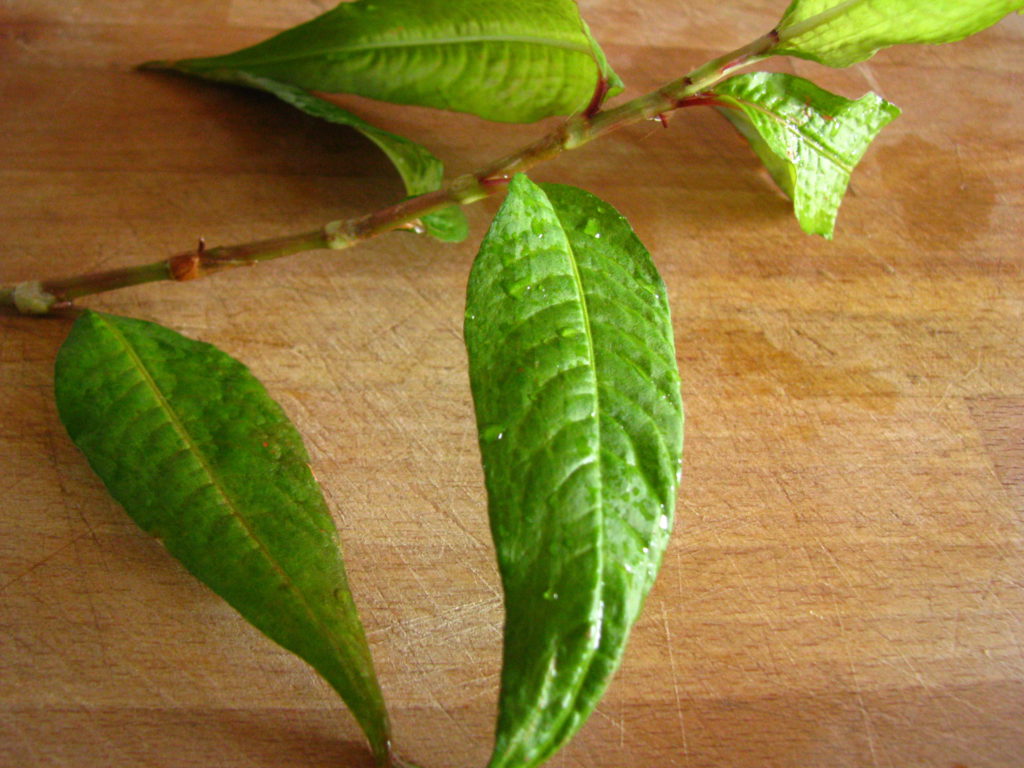
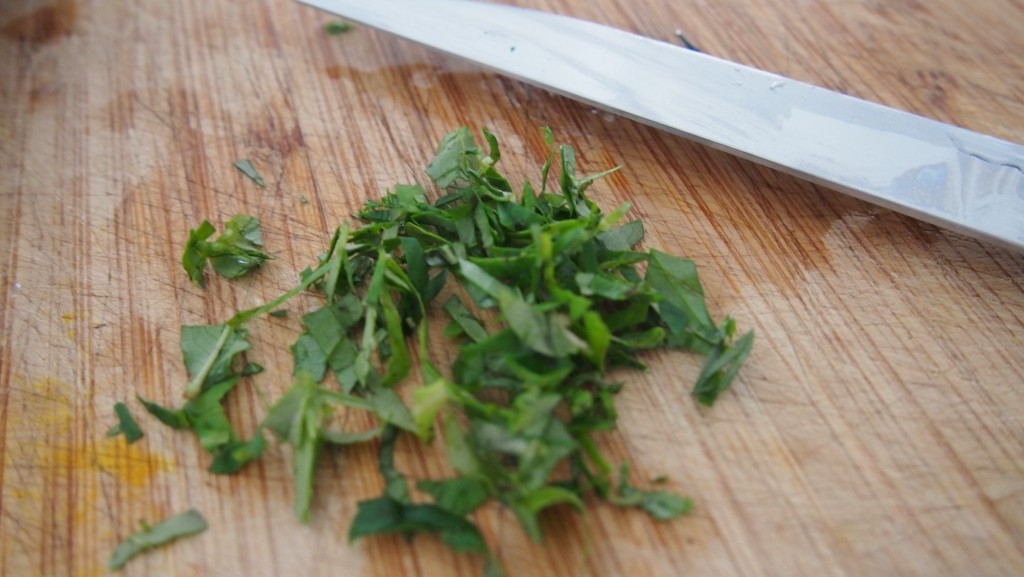
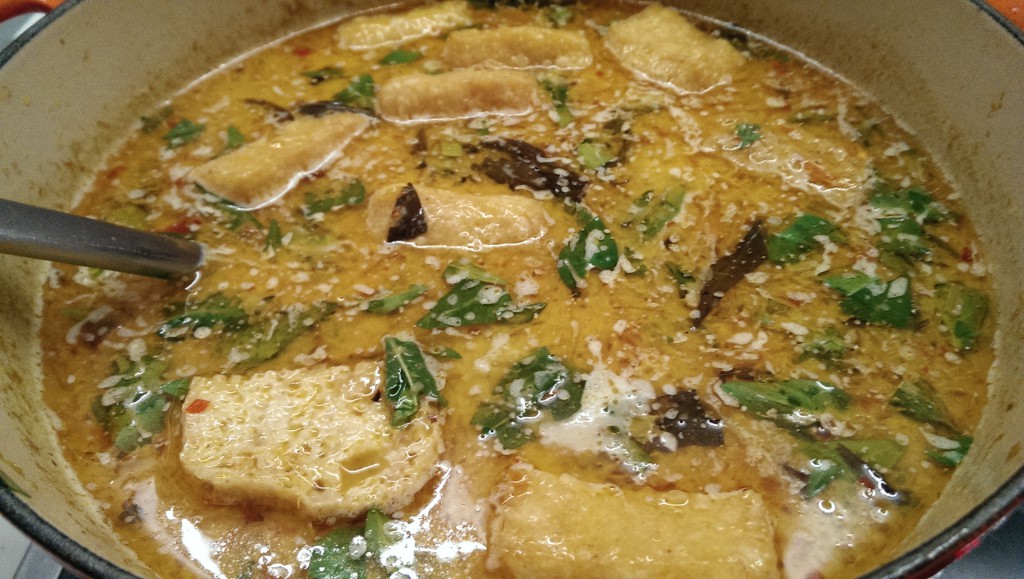

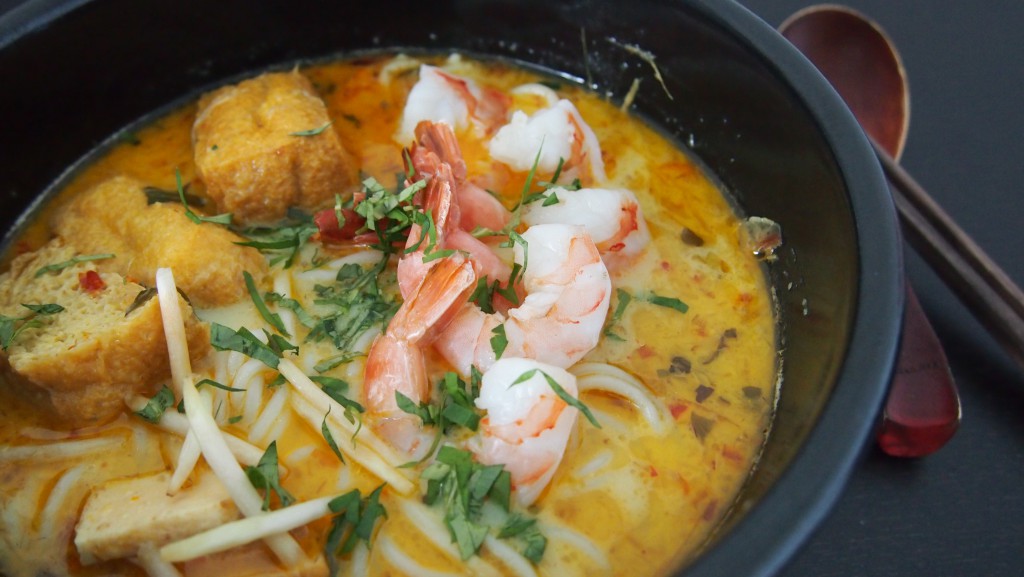

How u find it the taste of laksa from meatmen ? Is it as good as Roxy sq laksa ?
Hi,
It is rather authentic and it sticks to the original Nonya taste, which is not present in most laksa sold nowadays.
I haven’t tasted the Roxy version for a long time (since the 90s after I have left). I can only say that this version brings back more childhood memories than the Roxy one.
About laksa leaves.
Fresh ones, when they are chopped, they actually smell and taste green, no longer having the ‘laksa’ aromatic smell.
Any suggestion on how to prep the leaves or how to chop them?
Hi Andre! When you buy daun kesom (laksa leaves), they are sold in stalks. You can keep them in a plastic bag in the fridge for about a week. Once you pluck the leaves off the stalk, the aroma will start to degrade at a rapid speed. I always only pluck them at the moment when I use them. No point freezing them or drying them because those methods to preserve the smell don’t work. Hence the best thing to do is to chop them up or tear them into bits, only at the point when you need them, not before.
I’m an avid cook and frustrated container gardener. Found your blog while researching laksa leaf. Good tips. Looking forward to reading the rest of your blog. I love laksa and would love to make it at home here in Manila. What can one substitute for candlenuts?
Hi Nathan, great to meet another avid cook! If you can’t get candlenuts, you can still make laksa. It gives a nice nutty dimension to the curry paste but is not essential. Give it a go, I’m sure you can make a great laksa in Manila!